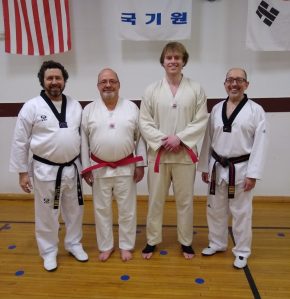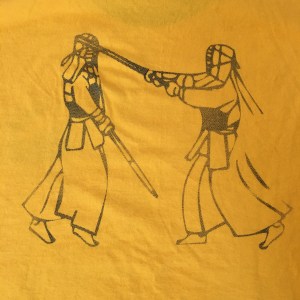Hi, Transition Program students! I’m writing this for you, as well as for all of the other people who will look at this and read it. Hopefully lots of people read it because I need them to play along!
So guys, all of the other people reading this are asking, “Who or what are transition program students?” I’d better explain for them. In our case, right now, it mean teens between the ages of 14 and 18 years old who are blind, and who are students with us at the Lighthouse Center for Vision Loss. Blind includes visual impairment that qualifies as being legally blind; many of the students have vision of some sort. It might be something like looking through a paper-towel tube with only one eye, or seeing the world as if looking through a fogged-up shower door. Some of the students have been blind since birth and some have lost vision along the way. Some are totally blind and have never had any sight.
The student part relates to learning skills so they can live and work independently. That can include college success and it ultimately means success in a job. It’s all about being employable and being able to work effectively. In fact, our students may need to be able to do a job, or some parts of it, better than a sighted person might do it, just to get a fair shake. Custodian, store clerk, teacher, computer programmer, insurance agent, lawyer, chef and restaurant owner; name it, and we’ve got to help them get ready for it.
Getting ready includes doing stuff on a computer, walking around town, taking public transportation, being able to do laundry and dress appropriately, being able to cook a decent meal for themselves or their loved ones. These students don’t live with us. They live and go to school all over the state of Minnesota. They come into town for five weekends during the school year and then we do remote Zoom team meetings each week and support them in their daily living and home practice. They learn here and then they live and practice at home.
Ok, students, back to you. A lot of that is challenging stuff. Still, you’ve got to work at all of it to become capable in all of those areas. What choice do you have, right? What’s the alternative? I supposed you can live in your parents’ basement until you’re my age and your parents are, like, ninety years old and too old to throw you a box of Pop-Tarts down the stairs anymore, and then you starve. So, I guess the choice is to get good at all of this stuff or starve. Simple.
Two things happened over the past week that made me think of writing this post. The first thing is that you guys discussed starting a blog and being able to post your recipes, and maybe other stuff. Which is very cool, in my opinion. The second thing that happened is some Taekwondo students tested and promoted to their next belt rank.
The finale of our promotion testing was two guys testing for red belt, the rank just before black belt. David is twenty-four years old. He is strong, talented and has a good memory. He played rugby in college. He began training two years ago after being invited by another student to a “Buddy Week.” He had never thought of starting martial arts before.

The other student who earned his red belt, Jeff, is sixty-eight years old. That’s right: SIXTY-EIGHT! He started Taekwondo four and a half years ago after he enrolled his grandson in classes. Jeff practiced Taekwondo a little while in college but he stopped after he got hurt and then graduated. Now he wondered if he could start again at his age. He has carried the idea of being a black belt with him all of these years.
Actually, Jeff and his wife, Mari, both joined class together. Mari had to stop training after a couple of years because of some physical matters. Just so you know, about ten years before that Mari had been driving and was hit head-on by a drunk driver. Her body was shattered in many ways and she had a long, painful recovery that took a couple of years. She still has lingering challenges. Then, lo and behold, she got to age sixty-two and started Taekwondo with her husband. Crazy!
Jeff has taken four and a half years to get to red belt because he had two big gaps in his training. The first gap was to get a hip replaced; that’s a big surgery. The other gap was to get the OTHER hip replaced! His orthopedic surgeon told him not to come back to training. He did, and he’s done great. Imagine going through all of that at his age and then still coming back to do Taekwondo! Talk about a challenge.
David has had some tough stuff to deal with in his own life. We’re talking big, rotten lemons. It’s cool to have him in class and see him be one of the most hard-working students, with one of the most positive, helpful, can-do attitudes.
Neither one of those two guys ever imagined training in Taekwondo, never mind testing for black belt. If you ask them how they progressed from their unexpected beginnings until now, I bet they’d say something that I have said. It’s this: Just one class at a time.
Just one class at a time. One practice at a time. That’s the biggest secret to becoming a black belt. A white belt might walk in and say, “I’m not sure I can do this; I can barely walk and chew gum at the same time,” which seems a far cry from being a black belt. We had one new student who was so nervous that she visibly shook during class for a year! She’s a black belt now. New students join and they just keep showing up to practice, and one day they’re testing for black belt. They defend against multiple attackers and break boards and bricks with hands, feet and even while jumping and spinning in the air. That’s a lot more than chewing gum!
By the way, you guys can walk and chew gum AND also sweep a cane at the same time AND also listen for traffic cues. Give yourself a big pat on the back, and then keep working on it!
David and Jeff would tell you that not all classes are encouraging. David had some techniques he probably thought he’d never get the hang of. Jeff had many classes when he asked himself, “Am I too old for this?” and went home discouraged. Jeff struggles with remembering stuff, too. They’ve both been discouraged along the way and yet look where they are now. They kept showing up for practice and simply did their best when they were there. Sometimes it was great and sometimes it wasn’t.
You know, even more than one class at a time, improvement happens one technique at a time. In class, I’ve had many experiences that sounded like this: “Wow, that kicking combination went pretty well!” Then, “Well, that one stunk.” And then after that, “That one stunk, too.” And, then sometimes, “That one was even worse!” And then, “Man, the hardest part of Taekwondo is definitely the floor,” as I rubbed my elbow and tailbone. Now I avoid falling down; at my age it can be devastating.
I’ve been told that our Korean Great Grandmaster has said that the expression shouldn’t be, “Practice makes perfect.” The expression should be, “Practice IS perfect.” Sometimes practice works out well, sometimes not. Sometimes it’s fulfilling, sometimes it’s frustrating. No matter, it’s perfect; it’s perfect because you practiced, you did it, you stayed on the road to what’s ahead.
Who knows, maybe someday I’ll promote a blind student to black belt. They’ll get to black belt the same way.
So, guys, among all of the skills you are learning, you know our inside joke, right? You have to practice touch typing. And, you know, it’s true! Just now, right in the middle of typing this, I took a three-minute touch typing test online and here are my results: 55 words per minute with 98% accuracy. When I got my first job after getting my master’s degree, it involved a lot of typing. I typed with two fingers while looking at the keyboard. I thought I was pretty fast, except my coworker, Betty, touch-typed and her fingers flew across the keyboard. She could finish a proposal four times a fast as me.
That was typing grant proposals to try and get money for programs that help people, kind of like the Lighthouse. It’s better to be able to finish one of those in a couple of days rather than in a week and a half. In the same time you can finish four of them, and that means maybe more money to help people. Typing faster also means being able do a school paper in a couple of nights instead of eight nights. If you’re a teacher it might mean you can reply back to all of the emails from parents in one evening instead of just a quarter of them; your students’ parents will be a lot happier to hear back sooner, and the student would deserve it, too.
Back on that proposal writing job, I ended up going to the library and checking out a book called, “Touch Typing Made Simple.” I started practicing for ten or fifteen minutes a couple of times a day at work. I had my work to do so I couldn’t do it for too long. So, I would steal time when I could. One day, a couple of months or so later, I realized that I could touch type well enough to start doing it for my work. It was actually slower than my two-finger method, but it was also extra practice. Then one day I tried typing again with two fingers and I realized that I could touch type faster!
Taekwondo students gain their black belt skills by practicing, just one class at a time. One class and then another class and then another. Good ones and bad ones. I picked up my touch typing ability one fifteen-minute session at a time. Fifteen minutes now, and then fifteen minutes tomorrow, and then again and again. It works; it didn’t always feel great along the way but it feels great now.
Ready to play? Here is where everyone reading this, students and others, can play together. Post a comment to this blog entry and tell us your typing test results. I went to http://www.typing.com; you can do it wherever and however you want. If your results are crappy, it’s just being honest; your results are what they are and that’s just the way it is. It’s called being a white belt, where everybody starts; tripping while chewing gum and shaking with nerves. If you’re another reader, then please play along with us; help support and encourage our students.
If you then want to keep playing (PLEASE DO!) practice touch typing a little bit each day for a week or two. Then, test again and come back and post your new results. Students, if you post your results, I’ll give you a dollar when I see you next month. Everybody else: you’ll get a big, heartfelt virtual high-five.
No one is going to earn a new belt promotion in just a week to two. The idea is to just practice. Because practice is perfect. The results and satisfaction will come later, guaranteed.



Recent comments